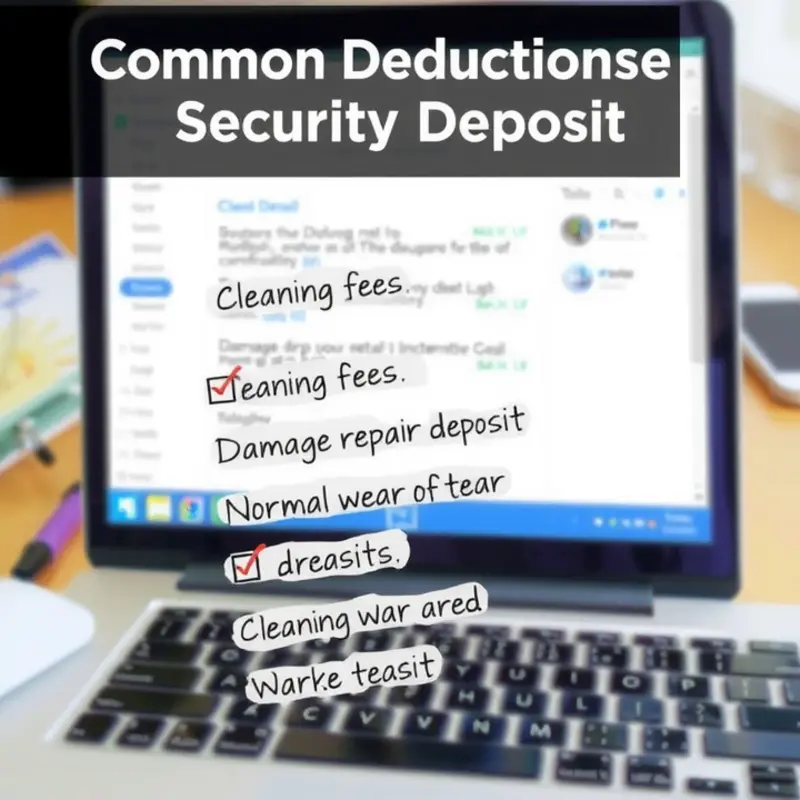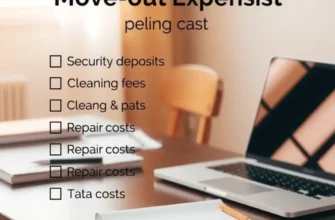Renting your first apartment can be both exciting and overwhelming, especially when it comes to understanding all the financial terms and paperwork that come with it. One of the critical documents you’ll encounter is the security deposit receipt. This receipt serves as proof of the paid security deposit, and it’s essential for safeguarding your rights as a tenant. By grasping the importance and implications of a security deposit receipt, you can ensure a smoother rental experience. Whether you’re a young professional starting a new chapter, a student settling into your first cantina, or a family looking for a cozy home, understanding this document helps clarify your financial obligations and give peace of mind during your rental journey. Let’s delve into what a security deposit receipt is, why it matters, and how to keep track of it effectively.
The Significance of a Security Deposit Receipt

A security deposit receipt may seem like a mundane piece of paper, but it carries substantial weight in the realm of renting properties. This document is essential for ensuring that both tenant and landlord are on the same page regarding the deposit’s amount and its intended purpose. It serves as an acknowledgment that the security deposit has been received, and offers a trail for tracing any deposit-related issues that may arise.
Understanding the key components of a security deposit receipt is crucial. First and foremost, the receipt should include the full amount of the security deposit. Additionally, it must indicate the date of payment and the mode of payment, whether by credit card, check, or bank transfer. Important details such as the address of the rented property, the start and end dates of the lease, and both the tenant’s and landlord’s names and contact information should also be clearly stated.
Transparency regarding deposit-holding practices is also vital. The receipt should specify where the deposit will be held and, in some cases, whether the tenant will earn interest on it. In fact, understanding the terms around security deposit interest could provide valuable financial clarity. For more on this, you might find this article helpful.
The obligations of both parties associated with the security deposit receipt are straightforward yet important. As a tenant, your primary responsibility is to ensure that you receive and retain this receipt. It acts as your evidence of payment and can be critical in disputes concerning deposit claims. In the spirit of due diligence, always store a physical or electronic copy in a safe place.
For landlords, the issuance of a receipt promptly upon receiving a deposit reflects professionalism and legal awareness. Landlords must accurately detail how deductions, if any, may be made from the deposit at the lease’s conclusion and the criteria for its return.
Maintaining this document in your records benefits both parties. When your lease term ends, conditions for the return of your security deposit will be revisited. The security deposit receipt is a critical reference point that can help prevent misunderstandings or disputes. It outlines both tenant obligations—such as maintaining the property and leaving it in good condition—and landlord duties, including conducting fair inspections and returning the deposit within a mutually agreed timeframe.
In summary, the security deposit receipt is not merely a formal document but a cornerstone of renting security. Its detailed components help safeguard financial transactions and anchor both tenants’ and landlords’ responsibilities. The trust and clarity ensured by this receipt can pave the way for smoother tenancy experiences, anchoring obligations and expectations from the initial transaction through to the lease’s conclusion.
Navigating the Return Process: What to Expect

Returning your security deposit is an essential part of ending a lease responsibly. When the lease concludes, landlords are obligated to return your deposit within a specific timeframe, often 30 days. Familiarize yourself with your local laws to understand the exact deadline applicable in your area.
Deductions from your security deposit may occur if there are damages beyond normal wear and tear. Common reasons for deductions include unpaid rent, cleaning fees, or repairs for damages caused by negligence or misuse. To avoid surprises, always request an itemized list of deductions from your landlord. This list should clearly explain each deduction and the corresponding cost.
If you disagree with any deductions, it’s crucial to address these concerns promptly. Write a formal letter to your landlord detailing your objections and provide supporting evidence, such as photos or receipts. Maintaining a record of all communications can be helpful if you need to escalate the issue. If necessary, consider seeking mediation or legal advice to resolve disputes effectively.
Documenting pre-existing damages is another critical step to safeguard your deposit. Before moving in, conduct a thorough inspection of the property and document any damages with photos and detailed notes. Share these with your landlord to establish a mutual understanding of the property’s condition from the start. This documentation will be invaluable in case there are disputes at the end of your lease.
To ensure the full return of your deposit, adhere to these actionable tips:
-
Thorough Cleaning: Prior to vacating, clean the apartment thoroughly. Pay close attention to often-neglected areas like kitchens and bathrooms. A clean apartment reduces the likelihood of cleaning fees.
-
Repair Minor Damages: Take care of small repairs, such as filling nail holes or replacing burnt-out light bulbs, to prevent deductions. These minor improvements can make a significant difference.
-
Use a Move-Out Checklist: Many landlords provide a checklist to guide you in restoring the property to its original condition. Ensure every item is ticked off before leaving.
-
Attend the Final Walkthrough: If possible, accompany your landlord during the final inspection. This is an opportunity to discuss any concerns directly and resolve them on the spot.
By adopting these strategies, you can minimize disputes and maximize your chances of receiving a full refund of your deposit. For additional guidance on handling lease-related financial matters, consider reading roommate financial agreements, which could further aid in smoother cohabitation and deposit management.
Engaging proactively with your landlord and taking diligent steps can greatly enhance your financial clarity and peace of mind as a renter.
Final words
A security deposit receipt is more than just a piece of paper; it’s a vital document that can protect you and ensure a fair, transparent, and smooth rental experience. By understanding its significance and meticulously following up on the return process, you will position yourself as an informed tenant and advocate for your rights. Remember to keep all your paperwork organized, communicate openly with your landlord, and, when in doubt, don’t hesitate to seek legal advice. Armed with this knowledge, you’ll navigate the rental landscape with confidence. Here’s to your new home!









